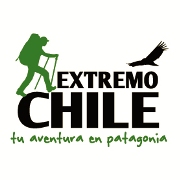Useful Info
Patagonian Climate
Patagonia summer offers warm, sunny days and cool nights. Patagonia days are long, the sun rises at about 4:30 a.m. and sets near 10:30 p.m. Typically temperatures are around 18ºC during the day, dropping to about 7 ºC at night. Higher elevations will be experience a slightly cooler climate, and frosts have been know to occur at night, even during the summer. During April, daytime temperatures are usually in the 15 ºC, and drop to the 2ºC at night. There are important climatic variations at the Region, influenced mostly by the relief, the sea and the wind.
The average rainfall registers 425 millimeters annual, mostly in spring-summer and in winter as snow. This is an area of wind, more intense at spring-summer, time at which it reaches an average speed of 40 to 50 kilometers per hour, fading almost at all in winter.
| Spring | Summer | Fall | Winter | |
|---|---|---|---|---|
| Maximum Average | 11,2 °C | 15,3 °C | 10,0 °C | 3 °C |
| Minimum Average | 2,5 °C | 5,5 °C | 2,3 °C | -5 °C |
What to bring to hike in Patagonia
HEAD
- Wool or polar fleece hat (bring two)
- Sunglasses with real UVA protection and glass lenses or ones with very dark lenses
- Sun block 45spf minimum!
- Fleece neck warmer/scarf
- Lip balm (Chap stick)
LEGS
- Quick drying long underwear, also made of Capilene, Tekware or Duofold, to keep you warm at camp, but may not be necessary while trekking. Just 1 pair should do it.
- Water resistant pants made with Goretex or similar, to repel water but let the body breathe, just like the jacket.
- Hiking shorts for when it’s too hot (happens more than you’d think!)
- Polar fleece long pants for camping. Walking in these is torture way too hot. Only for the relaxing down times.
UPPER BODY
- Quick drying shirts and T-shirts. Look for clothing made with Capilene, Duofold CoolMax and Ultra Tec, or Tekware, all found in large outdoor recreation stores. This type of material ‘wicks’ moisture (sweat) off your skin and into and out of the fabric, allowing the body to stay dry and warm. Bring 2 or 3 changes. Wool garments are not advised: they make you sweat too much and are close to impossible to dry quickly.
- Cotton T-shirt for nights at the refuges and after a quick shower…if you get one, that is!
- Polar fleece jacket, always handy. Just 1 good one should do it to keep you warm.
- Waterproof parka ideally with Goretex, OmniTech, Sympatex, Conduit, etc. Keeps the rain out but also lets the body breathe to avoid condensation inside the jacket, which would get us wet and cold despite our best intentions. This is especially important when it’s very cold.
- Wool or polar fleece gloves. Remember that wool takes a long time to dry. Fleece dries faster and weighs less. Bring at least 2 pair.
FEET
- Polartec or polypropylene socks to wick moisture off the skin. Wool socks can cause blisters, so use those only while in camp. Cotton ones are okay, but also cause blisters.
- Hiking boots with good ankle support. Leather boots are the best choice: they last longer, but also are more rigid and take a lot more time to break in. Make sure the soles are flexible, never hard! Another kind of boot is made of Nubuk or nylon. These are more flexible, but don’t last as long.
- One pair other shoes tennis shoes, Tevas, etc to wear at camp and rest the feet.
- Sometimes we ask people to bring gaiters that cover the lower portion of the pant leg and the boot, to protect against water or snow getting into socks and boots. We don’t want wet feet! The gaiters are made of Goretex or nylon, and price depends on the material used.

